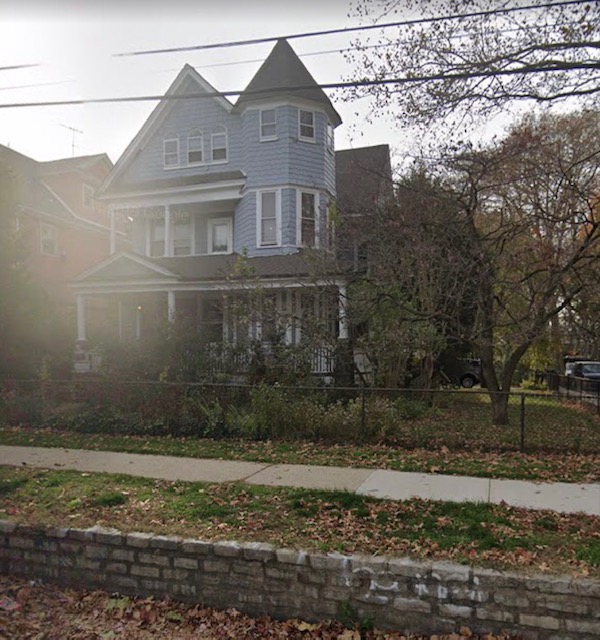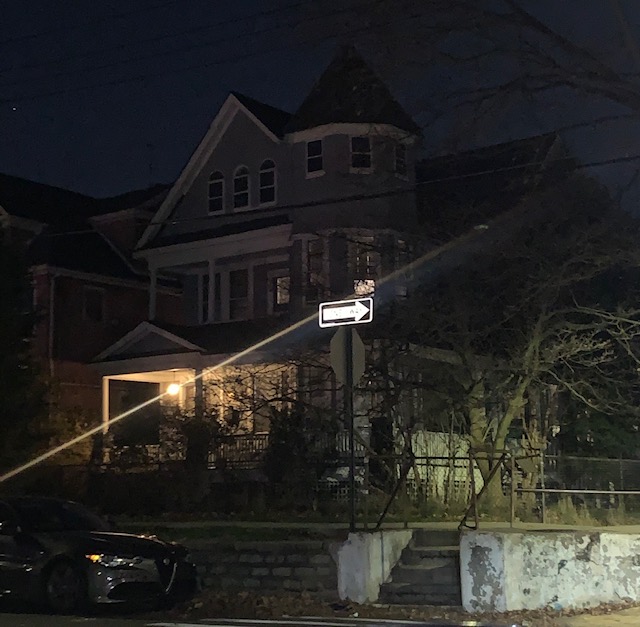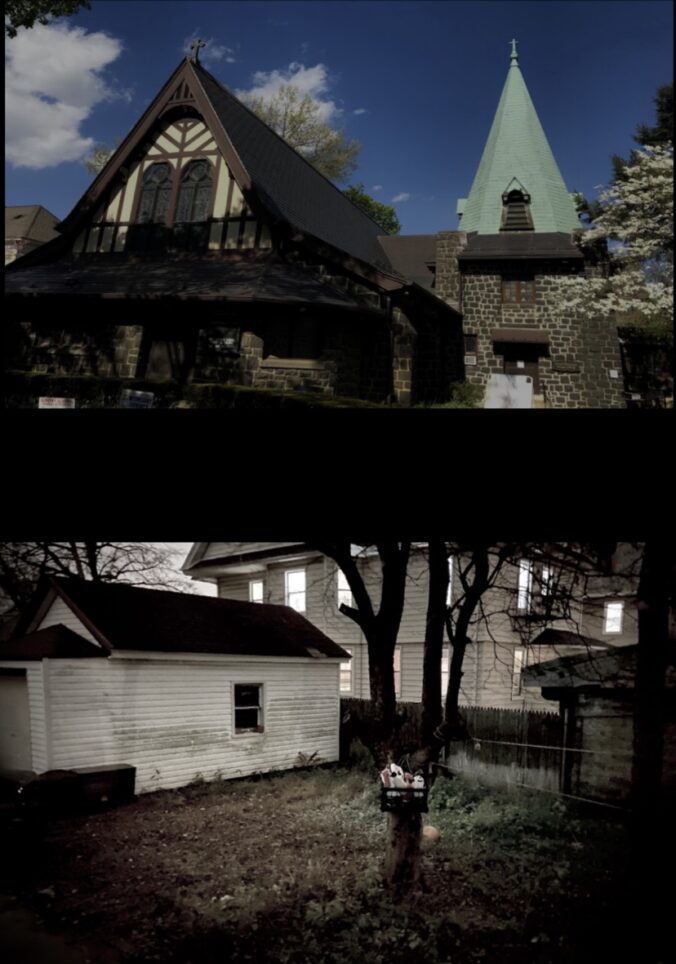Jessica Goriah
ENG-3407 Gothic Literature
Professor Sean Scanlan
Dec/14/2020
“The Haunting of Hill House and The Uncanny”
The book “Haunting of Hill House” written by Shirley Jackson, is about Dr. Montague inviting a research team to stay at hill house for a few days for the purpose to find some paranormal phenomena. Hill House was created by a man named Hugh Crain and he created hill house as if it would one day be like a display. This team consists of four people: Luke, Theodora, Eleanor, and Dr. Montague. As days pass by, supernatural manifestation has been present every day. Supernatural is best explained as an intensity that goes beyond nature. The research team experienced many paranormal phenomena that lead to space and architecture to inform the plot or character’s emotions or decisions.
One paranormal activity that takes place is in chapter 4, where Theodora is woken up by a banging noise by her room door. She screams for Eleanor, waking her up and when she gets up, she thinks her mother is calling her name but then she remembers that she is in Hill House. She realizes that Theodora is calling her, and she “struggled briefly with the door of the connecting bathroom” (Jackson, pg. 61) and goes into her room. The temperature went down and there was a loud banging noise coming from Theo’s door and hallway. They both heard “the iron crash came against their door, and both of them lifted their eyes in horror, because the hammering was against the upper edge of the door, higher than either of them could reach, higher than Luke or the doctor could reach” (Jackson, pg.62). Each Theo and Eleanor were afraid and horrified by the noise. When Luke and Dr. Montague checked up on the girls, it is revealed that the men have been on a wild goose chase. For two hours they have been chasing a dog around Hill House and they do not know where it went. They were confused as to how a dog got in the house when all the doors were locked. Both Luke and Dr. Montague did not hear any banging noises that the girls were talking about. Ironically, this paranormal phenomenon occurs when the group is split up. According to Anthony Vidler’s definition of architectural uncanny, he feels as though “The architectural uncanny is represented by a feeling of anxiety in which there is a slippage and lack of clarity between what is homely and what is unhomely” (Vidler’s, pg.1). This also occurs in chapter 4 when Eleanor and Theo hear the banging noise by the door and hallway which then interferes with that homely feeling and make them feel unhomely. Also, the fear they encountered represented anxiety. Architectural uncanny is present within the whole house. For example, when Hugh Crain created Hill House, he made it in a way to confuse people and for the house to not be a regular house. Jackson states, “Angles which you assume are the right angles you are accustomed to, and have every right to expect are true, are actually a fraction of a degree off in one direction or another”(Jackson, pg.49). When you look out of Theodora’s and Eleanor’s windows you should see the veranda, however, you do not.
According to Todorov’s definition of uncanny, the fantastic, and the marvelous, this scene falls under fantastic which is about uncertainty. In the novel, there is no explanation as to how the dog got into the Hill House, where it went, or who was knocking on the door that only Eleanor and Theodora heard. The only thing that can answer these questions is paranormal activity. However, there is a chance that it may not be a ghost, but a human that is doing this to them.
Another important scene occurs towards the end of the novel. Hill House tears Eleanor apart and makes her feel scared, anxious, and distrustful. However, this also has a way of making her feel at home and wanted. Eleanor finally surrenders to Hill House, which means that she allowed the hauntings to get inside her head and it begins to make her do things that her old self would not do. An example would be leaving her room in the middle of the night which is dangerous in Hill House. She begins to mock the hill house by knocking on all the doors as if she was the ghost. When everyone awoke, they could not seem to find Eleanor and when everyone was looking for her, she tried to hide from them. She finds her way in the library by climbing the stairs up to the tower, which is the same tower that Mr. Crain’s daughter’s companion died. Luke, Dr. Montague, and Theodora find Eleanor and try to help her down. Eleanor comes back to her senses, looks down, and sees the tower below her and “the iron stairway clinging to the tower walls, shaking and straining under Luke’s feet” (Jackson, pg.113). Luke eventually gets her down safely. The next day it is decided that Eleanor should go home because Hill House has become a dangerous place for her. The architecture uncanny that is present in this scene would be the tower in the library that Eleanor climbs. Eleanor climbs this fragile staircase and as she gets to the top, the staircase becomes shaky. This is that anxious feeling that Vidler talks about, where you feel unsafe in a place that you should feel safe in. In Vidler’s definition he believes that the anxious feeling “emanates from fragmented, mirrored, reflecting, and transparent surfaces that we see and move through—and live within” (Vidler, pg.1). Eleanor could be mirroring herself from Hill House which is why she is knocking on all the doors. She has become one with the house.
As stated by Todorov’s definition of uncanny, the fantastic, and the marvelous, this scene falls under fantastic because in the novel it is assumed that the house is responsible for making Eleanor act abnormal by getting into her head. In the novel, it is already known to the reader that not too many people stay in Hill House for long and that there is a pattern of people dying in Hill House. Therefore, in the novel, it could be possible that the house is getting in her head. However, Eleanor has been through a lot in her life, so there is a chance that she could be going through a psychological or mental breakdown.
Understanding how supernatural phenomena lead to architecture to impel the character’s emotions and decisions is important because you can see how Eleanor starts off as a shy and over-analyzing woman who tries to seek what her purpose in life is. Progressively through the novel, she opens up, becomes vocal, and does things that the old Eleanor would not do. For example, Eleanor decides to knock on all the doors, climb a dangerous tower, and then commits suicide. Hill House changed and affected her in many ways. Todorov’s definition of uncanny and Anthony Vidler’s definition of architectural uncanny help make sense of these scenes and the novel as a whole. Eleanor experienced discomfort with Hill House and as time went by, she became part of Hill House.
Works Cited:
Shirley Jackson. “The Haunting of Hill House”.1959
Anthony Vidler’s. “The Architectural Uncanny”. Essays in the Modern Unhomely. Cambridge. MA: The MIT P. 1992
Tzvetan Todorov’s. “The Fantastic: A Structural Approach to a Literary Genre”. Translated by Richard Howard. Ithaca. Cornell UP. 1975







